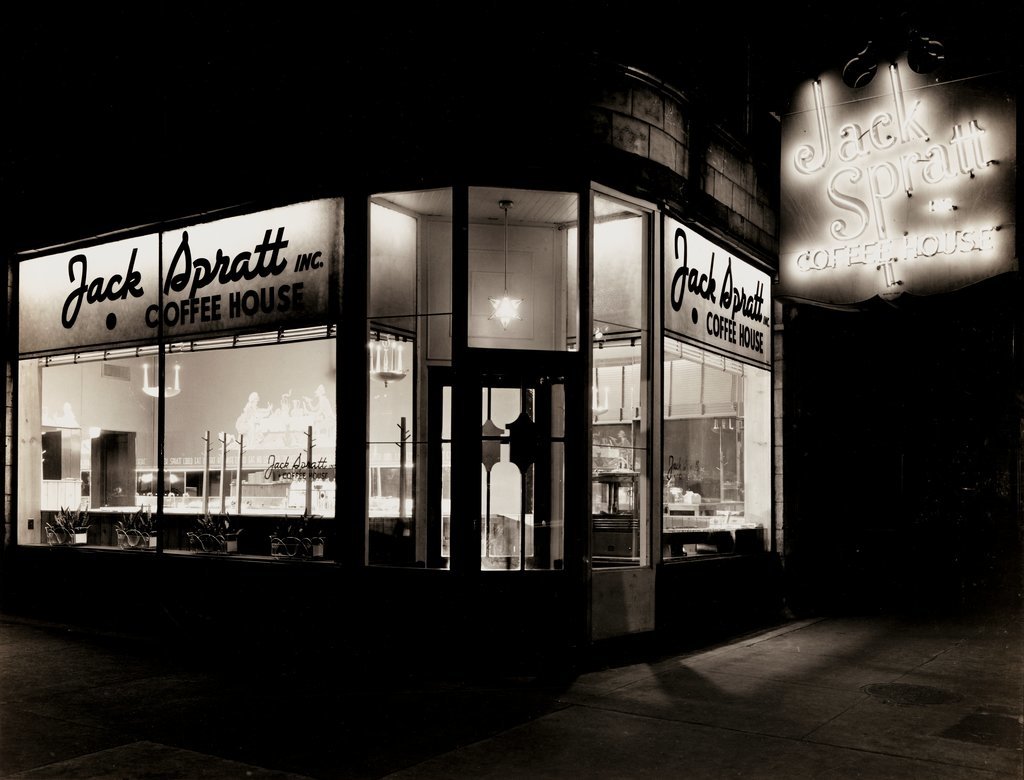The Chicago Sit-In, also known as the Jack Spratt Coffee House Sit-In, occurred on May 15, 1943, in Chicago, Illinois. The newly formed Congress of Racial Equality (CORE) organized the sit-ins at the Jack Spratt Coffee House in the Kenwood neighborhood on Chicago’s South Side.
The sit-in was inspired a year earlier, in 1942. One afternoon in 1942, members of CORE, including founder James Farmer, went to the Jack Spratt Coffee House. Farmer was refused service by the manager because he was Black. Jimmy Robinson, a white member of CORE, explained to the manager that by refusing service to Farmer, he was in violation of the Illinois Civil Rights Act of 1885. The manager then decided to serve both men.
Several CORE members returned to Jack Spratt’s two days later, where they were served without incident. After they left their payment on the table and exited, Jack Spratt, the manager, ran out into the street and threw their money on the ground, saying, “Take your money and get out! We do not want it!” In response, CORE decided that the Jack Spratt Coffee House would be the place for their first nonviolent direct-action campaign.
A year later, on May 15, 1943, around 4:30 pm., 28 people entered Jack Spratt in groups of two, three, and four. Each group of whites were served, while the Blacks in the groups were refused service. The whites passed their food to the Blacks or refused to eat until all were served. The manager told Jimmy Robinson, one of the white members, that if Blacks wanted to be served, they would have to be served in the basement. James Farmer, in response, told the manager that they would not eat in the basement. The manager then told Robinson that the Blacks could be served in the back corner. Upon hearing that, Farmer refused. The manager then called the Chicago police. Unknown to the manager then, the group had already told the police about their plans at Jack Spratt.
When the police arrived, they refused to arrest the group and told the manager that he had to serve the CORE protestors or find another acceptable solution to ensure no laws were broken. All the CORE members were then served that day. The Chicago Sit-In was the first of numerous protests that CORE members would participate in over the next forty years. The Chicago Sit-In inspired similar protests in Wichita, Kansas, and Oklahoma City, Oklahoma, in 1958 and the Greensboro, North Carolina sit-ins on February 1, 1960.
Do you find this information helpful? A small donation would help us keep this available to all. Forego a bottle of soda and donate its cost to us for the information you just learned, and feel good about helping to make it available to everyone.
BlackPast.org is a 501(c)(3) non-profit and our EIN is 26-1625373. Your donation is fully tax-deductible.
“The Chicago Sit-Ins,” Saving Illinois History One Story at a Time, https://drloihjournal.blogspot.com/2020/02/jack-spratt-coffee-house-civil-rights-sit-in-on-may-15-1943-chicagochicago.html; “The Chicago Sit-Ins,” Chicago Time Machine, https://interactive.wttw.com/timemachine/jack-spratt-coffee-shop-sit; Shah, Aarushi H. “All of Africa Will Be Free Before We Can Get a Lousy Cup of Coffee: The Impact of the 1943 Lunch Counter Sit-Ins on the Civil Rights Movement.” The History Teacher 46, no. 1 (2012): 127-47. Accessed September 4, 2020. http://www.jstor.org/stable/43264079.
Your support is crucial to our mission.
Donate today to help us advance Black history education and foster a more inclusive understanding of our shared cultural heritage.

